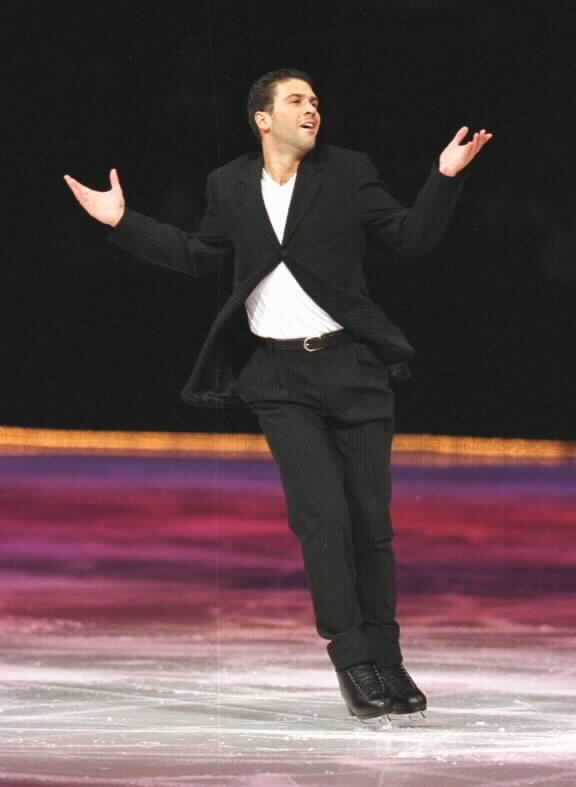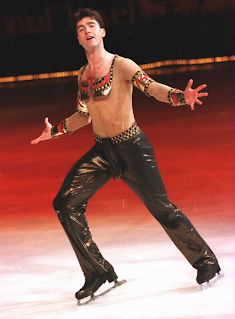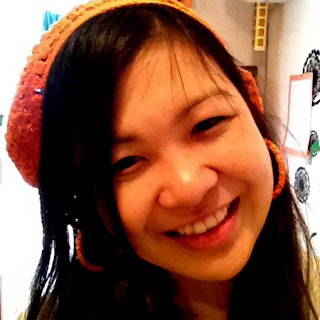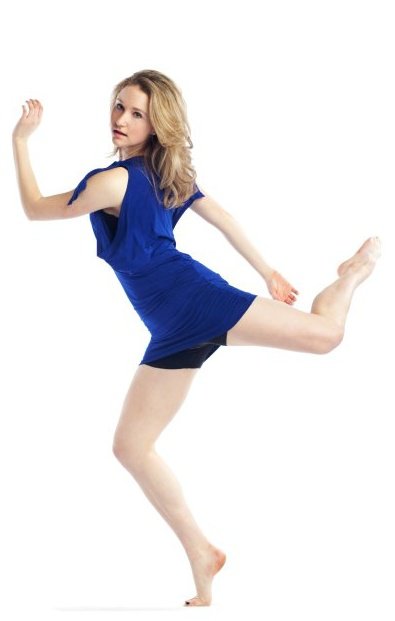When Scott Williams and Charlene Wong first came up with the idea of the American Open Professional Figure Skating Championships, their goals included "offering professional skaters the opportunity to win a title, audition for their industry, share their talents with the skating community, and promoting the many talented professional skaters in general." With the dozens of professional, invite-only events taking place in the mid to late nineties, they recognized the fact that opportunities for lesser known skaters were limited and worked diligently to develop a competitive venue for these skaters.
Brian Boitano and Scott Williams
"I had benefited from the other pro competitions (World Pro in Jaca and U.S. Open) and felt that more skaters should have that type of opportunity," explained Scott Williams. "I also believed that amateur competition rewarded technical expertise heavily which was appropriate in that sporting environment, but there should be a venue that awarded entertainment value and mastery of the art of ice skating. I don't believe that the first necessarily translates into the latter, but the best professional jobs went to the skaters that excelled in what was then amateur competition and some great performers, entertainers and artists often struggled because they did not receive adequate publicity." The decision to hold the event also had roots in his own love and respect for true professional skating. "In short, I enjoyed what I call 'professional' skating much more and also enjoyed watching it more. A true artistic and entertaining piece performed by a skater with a mastery of skating skills AND performance skills is the apex of the art of ice skating. The rules of competition shouldn't get in the way of the goal, and that was what I set as a standard for The American Open Professional Figure Skating Championships." Williams also very much had fairness and democracy in mind: "At the time I created the American Open there was also a good deal of discussion amongst professional skaters about organizing similarly to the ATP in tennis or PGA in golf. It was an exciting discussion but it never seemed to go anywhere. So, when I started the competition we simultaneously created the Professional Figure Skaters Cooperative (now ProSkaters) so that rules and judging would be handled and overseen by the competitors as members rather than by the producers. It was an effort to make the event as democratic as possible and to also help build interest in joining the pro skaters' organization which I felt was important to the industry."
Judging for this competition was a scoring system "on an individual basis", with specific judges assigned to categories such as jumps, twists, lifts and throws, rapport and timing, profiency and quality, spins, lifts and dance manoeuvres, footwork and connecting moves, originality and creativity and audience appreciation. Judges included Brian Wright, Oleg Vasiliev, David Santee and Natalie and Wayne Seybold. Technical and artistic programs were skated in addition to a qualifying round that determined which skaters would advance to the general competition. Williams explained that the qualifying round process was designed to be "simple and consistent. The top 3 or 4 skaters always advanced. In the qualifying round they performed just the artistic program. It was meant to be understandable and fair, and not subject to the whims of a panel decision." Prescribed elements were required for technical programs or in the case of ice dance, the rhythm dance and props were only allowed in the show act category and artistic programs. More freedom (obviously) was given to the skaters in the technical programs than in ISU competition. For instance, instead of a double Axel being strictly required in singles programs, skaters were given the option of performing a double Axel, double Lutz or double flip. Thrill elements like the backflip and adagio moves in pairs were permitted as well. In addition to Williams and Wong, many other people were involved in the organization, coordination and execution of an event of this calibre. "Through the process I had the pleasure of working with a number of passionate individuals and it was such a pleasure to see their enthusiasm. My family all participated substantially and I'm very grateful for their help! They did everything from scoring software to hospitality to legal counsel. Others who participated in major roles include Susan Austin, Brian Klavano, Tony Kudrna, Ari Zakarian, Sylvia Froescher, Barbara Roles, Phil Valentine, Steve Disson, many fantastic skaters and judges, and skating fans," remembered Williams.
Left: Vladimir Besedin and Oleksiy Polishchuk. Right: Irina Grigorian.
Held from May 30 to June 1, 1997, the first American Open Professional Figure Skating Championships were presented at the Pickwick Ice Arena in Burbank, California. Competititions were made available for men's and women's singles, pairs, ice dancing and a new category, the "show act". On the importance of including a "show act" category, Scott Williams explained, "To me, this was the most important distinction to the event and also a statement about what we valued: entertainment. Ari Zakarian was instrumental in creating excitement and participation in this category and it was always my favourite. I am very proud that the competition helped advance the careers of some of the most entertaining acts of the last decade as that was exactly our goal." In the first "show act" competition ever held, two teams of ice acrobats battled for the top two spots and in the end, Russians Vladimir Besedin and Oleksiy Polishchuk edged Armenians Ari (Zakarian) and Akop (Manoukian) for the title. Also competing in the Show Act category were Doug Mattis, Debbie Park, Chika Maruta, Beth-Anne Duxbury and Lisa Clinton. In the ice dance event, 2 time U.S. Champions Renee Roca and Gorsha Sur earned a cumulative score of 100.06 to place ahead of former World University Games competitors Mimi Wacholder and Colin Sullivan and Tamara Kuchiki and Neale Smull. The pairs event was won by Beth-Anne Duxbury and her partner Byron Darden, who defeated Kim Fowler and Grey Johnson (former Ice-Castle co-owners and coaches) for the win. The men's and women's competitions included qualifying rounds, where all skaters performed an artistic program and the top seven skaters advanced to compete in the technical and artistic programs. Skating to Alannah Myles' "Song Instead Of A Kiss", Lisa-Marie Allen narrowly defeated Charlene Wong to win the first American Open women's title. Finishing third was 1991 World Bronze Medallist in pairs Natasha Kuchiki, who skated to "Whoomp! There It Is!" by Tag Team. Also competing were Great Britain's Susan Jackson Wagner, Tracey Damigella, Natalie Shaby and Lisa Ware. Among the skaters competing in the qualifying rounds and not advancing that year were Amy Jaramillo, Bobbi Brown McRae and Edward Vancampen of Holland. The men who did advance proved to comprise a very strong field. Craig Heath, Axel Mederic, Aren Nielsen, Cameron Medhurst, Vadim Shebeco and Bobby Beauchamp were all within five points of the winner of the men's competition, Doug Mattis. With an overall score of 95.82, Doug's technical program "Shine On Your Shoes" featured a gorgeous double Axel, double toe/triple toe, triple Salchow, Cantilever, a backflip and Russian split jump and his artistic program "The History Of The World" was a tour de force that interpreted music telling the story of the world's evolution through its music. His artistic program, which like his technical program was choreographed by Chris Nolan, featured a a triple salchow, triple toe, double Axel, double flip, double toe, delayed single Axel, spread eagle into Cantilever, backflip and even a little Kristine W (who I love!). On the American Open experience, Doug stated, "During a time when non-former World Team members like me and Rory Flack were fortunate enough to have breakthrough performances at the U.S. Open, Scott Williams' American Open provided me with one more opportunity to show my creativity and gain exposure that I might not otherwise have. I am deeply grateful to him. I owe much of my wonderful pro career to the U.S. Open - and the American Open and Scott Williams. Having that opportunity to be an unknown with a voice - that has inspired me to be dedicated to giving others a megaphone for their voice whenever I can... including MK Young Artists Showcase 4."
Doug Mattis' winning artistic program in 1997
The next year, the competition moved from Burbank, California to the Fox Valley Ice Arena And Fitness Center in Geneva, illinois. The 1998 event was hosted by 1988 Olympic Gold Medallist Brian Boitano, and featured an incredibly deep field of competitors. In only their second performance together, former Olympians (for Italy and the United States with different partners) Lia Trovati and Russ Witherby captured the ice dance title with 68.2 points, edging out Andrea Barnova and Lyndon Johnson (who competed in pairs for Canada at the 1988 Winter Olympics in Calgary), 1991 Canadian Champions Michelle McDonald-Wheeler and Martin Smith, Emmanuelle Balmori and Jean-Pierre Boyer, Laura Gayton and Colin Sullivan and Samantha Liegner and Jonathan Stine. The pairs event was won by 1994 World Champions Evgenia Shishkova and Vadim Naumov, who outranked Canadian adagio team Christine and Dion Beleznay, Rosanna Tovi and Andrew Naylor, Irina Grigorian and Mikhail Panin, Laurilee and Rosstyn Eduardo Gudiño and Kim Fowler and Grey Johnson. In the show act category, hula hooping Irina Grigorian defeated reigning champions Vladimir Besedin and Oleksiy Polishchuk, her pairs partner Mikhail Panin, Akop Manoukian and Armen Sakien, Debbie Park, Lisa Clinton, Sergei Karelin and Boris Filipov and Greg Wittrock, who brought his drag persona Whorita to the ice. The men's competition was won by 1995 Canadian Champion Sebastien Britten. Placing second through seventh were David Liu, Gzregorz Filipowski, Craig Heath, Petr Barna, Richard Swenning and Igor Lioutikov. Failing to advance from qualifying were Stansilav Jirov, Edward Vancampen, Shin Amano and Marc Alexander. After finishing 6th in the qualifying round, Chrisha Leann Gossard rebounded to win both the technical and artistic programs in the ladies events, placing ahead of Russian Champion Olga Markova, Susan Jackson Wagner, Suzanna Szwed, 1997 Champion Lisa-Marie Allen, Canadian Champion Tracey Wainman and Tracey Damigella. Failing to advance from qualifying were Jennifer Hunt-Nestelberger, Amy Jaramillo, Beth-Anne Duxbury, Larissa Zamotina, Nancy Pluta, Debbie Park, Jennifer Lyles, Natalie Luccaro, Elise Ostiguy, Alicia Narby and Tori Tinari.
Greg Wittrock performing in the Show Act category as Whorita, skating to Donna Summer's "Love To Love You Baby"
The American Open returned to Geneva, Illinois in 2000 with more "big name" skaters as well as many super talented skaters trying to achieve that name and title. The show act competition in 2000 was once again won by 1997 Champions Vladimir Besedin and Oleksiy Polishchuk, who defeated Dan Hollander, Gia Guddat, Violetta Afanassieva, Debbie Park, Akop Manoukian and Armen Sakien, Oksana Anichkina and Michael Kho for the title. The ladies event was won by U.S. Open Champion Rory Flack Burghart. Aimee Marissa Micu, Lisa Bell, Beth-Anne Duxbury, Elin Gardiner Schran, Katherine Healy, Colleen Maguire and Amy Jaramillo Lambert finished 2nd through 8th, respectively. The men's title in 2000 was won by Dan Hollander, who won both the technical and artistic programs to take the title, ahead of Craig Heath, 1994 World Bronze Medallist Viascheslav Zagorodniuk, Matt Kessinger, Shin Amano and Edward Vancampen of Holland. After the withdrawal of Darlin Baker and Andrzej Dostatni, Sarah Simpson and Nicholas Clowers became ice dance champions, and the pairs event was won by 1994 World Champion and her partner Jason Dungjen, who beat 1995 World Champions Radka Kovarikova and Rene Novotny and Svetlana Butova and Maxim Fomin.
Left: Elena Leonova and Andrei Khvalko. Right: Caryn Kadavy.
The final time the American Open was held was from December 4 to 5, 2001 in Philadelphia, Pennyslvania. When asked how the event grew from the first year to the last year, Scott Williams explained, "It started as just my crazy idea while performing at Charles Schulz's wonderful Santa Rosa Show in December of 1996. It was a steep learning curve and a lot of work to get going and such a relief when skaters actually showed up. It took a lot of encouragement to get them to participate but I think everyone had a good time and that helped the event continue. The depth of skaters increased every year and it was very competitive! We started at Pickwick Ice Arena in Burbank, California and then we went to the Fox Valley Ice Arena in Geneva, Illinois for the next two events. In 2001, Steve Disson helped the event expand and move to the Comcast Arena in Philadelphia and get coverage on Comcast CN8." Sponsored by Motrin in its final year and again hosted by Brian Boitano, the format changed slightly. With more higher profile skaters added kto the roster of competitors, not all skaters were required to compete in the mens and ladies qualifying rounds. Instead, the top 3 in each of these rounds advanced to compete against invited skaters. The show act category was once again hugely popular, and Vladimir Besedin and Oleksiy Polishchuk won their third and final title here. Violetta Afanasieva and her future husband Pete Dack finished second, followed by Victor Baryshevtsev, Dan Hollander, Debbie and Lee Park and Gia Guddat. With programs to "Dr. Zhivago" and "Last Of The Mohicans", World Champions Angelika Krylova and Oleg Ovsiannikovv easily won the ice dance competition ahead of the team of Jones and Ortogero. Skating to music from Vivaldi's "The Four Seasons" and Ravel's "Bolero", World Professional Champions Elena Leonova and Andrei Khvalko placed ahead of Canadian medallists Jodeyne Higgins and Sean Rice and Rosanna Tovi and Andrei Bannikov to win the pairs event. Among the men, it was 1994 Olympic Gold Medallist who won the overall competition, skating to "Georgian Variations" and "Prince Of Egypt".
Steven Cousins
Winning the artistic program and finishing second was Steven Cousins. Also competing were Craig Heath, Viascheslav Zagorodniuk, David Liu, Evgeny Martynov, Dan Hollander and Masakazu Kagiyama of Japan. Failing to advance from qualifying were Shin Amano, Sergei Minaev and Edward Vancampen. Failing to advance among the ladies were Roselle Sousanna, Katherine Healy, Amy Jaramillo Lambert, Amber Leigh Anderson and Miriam Gelfand Pereira. Additionally, Hanae Yokoya, Lisa Bell, Donna Lewandowski, Joy Thomas all withdrew prior to the competition. There were nine entries in the women's event and there was certainly a great deal of depth to the field.
Nicole Bobek
Despite not winning either the technical or artistic program, the fabulous Nicole Bobek proved the most consistent overall, winning with programs to "Captain Corelli's Mandolin" and a Beatles medley. Winning the artistic program but hampered by a fifth place finish in the technical program, Rory Flack Burghart finished second overall, followed by Lucinda Ruh, Josee Chouinard, Caryn Kadavy, Junko Yaginuma, Lu Chen, Charlene Wong and Yukiko Kawasaki.
Left: Angelika Krylova and Oleg Ovsiannikov. Right: Alexei Urmanov.
After the 2001 event, Scott Williams and Turtle Island Productions found it was not financially possible to continue with the event. "I'd love to hold the event again, but since our last American Open in December of 2001 have not found a financially viable environment for it," explained Williams. He also explained that he believes many factors explain why professional skating is in the position it's in today. "I miss the good professional competitions and shows and I think that with an audience they could have continued to evolve into better and better entertainment but there are many factors which make it unlikely that we'll ever see a separate professional competitive arena for skating again. I think the elimination of 'amateur' skating also killed the best of 'professional' skating. Without professional competitions there is less motivation for professional skaters to reach their potential and create new and interesting programs. But to me that should only be one aspect of skating entertainment, as a solo can only go so far. We have been far outpaced by the world of dance and hopefully in time we will wake up as an industry and understand that doing the same thing over and over is not interesting. Professional skating used to be innovative and exciting. That is missing now and I hope it can happen again in the future even if pro competitions do not." When asked to recall his favourite performance over the years at the American Open, Scott Williams could not pick just one: "There are quite a few for me: Vladimir and Oleksiy going head-to-head with Ari and Akop in the first Show Act event in 1997. Doug Mattis and Craig Heath competing so strongly for that same year's title. Seeing Elena & Andrei perform their Bolero program in 2001 was amazing, as well as Rory skating to Aretha that year. I was very impressed with Sebastien Britten's winning performance, and Lisa-Marie Allen was always one of my favorites. Irina Grigorian was fantastic to have in the event and always a showstopper." After reading the first two parts to this blog on open pro competitions, Scott talked about the main differences between the Jaca World Pro, the U.S. Open and the American Open events, he himself having won the titles in Jaca and at the U.S. Open previously and created this event. He explained that there was no real connection between the U.S. Open and the American Open beginning. "It was just that the era of professional skating competitions was ending and we were doing our best to keep it alive." He had great admiration for the other two events: "I was an admirer of what Pablo did for professional skaters by holding the World Pro in Jaca. I also appreciated the U.S. Open and its excellent success here in the States. I tried to emulate what I thought worked best, but create an even more 'open' atmosphere that empowered the participants. As a professional skater I was very ambitious and these were the only competitive options available to me at first and doing well at them made it possible for me to participate in other competitions. That was the motivation to create another opportunity with the American Open and to give other skaters the opportunity I enjoyed. For that reason I tend to see more similarities in the important aspects than differences in some details."
Skate Guard is a blog dedicated to preserving the rich, colourful and fascinating history of figure skating. Over ten years, the blog has featured over a thousand free articles covering all aspects of the sport's history, as well as four compelling in-depth features. To read the latest articles, follow the blog on Facebook, Twitter, Pinterest and YouTube. If you enjoy Skate Guard, please show your support for this archive by ordering a copy of the figure skating reference books "The Almanac of Canadian Figure Skating", "Technical Merit: A History of Figure Skating Jumps" and "A Bibliography of Figure Skating": https://skateguard1.blogspot.com/p/buy-book.html.

























